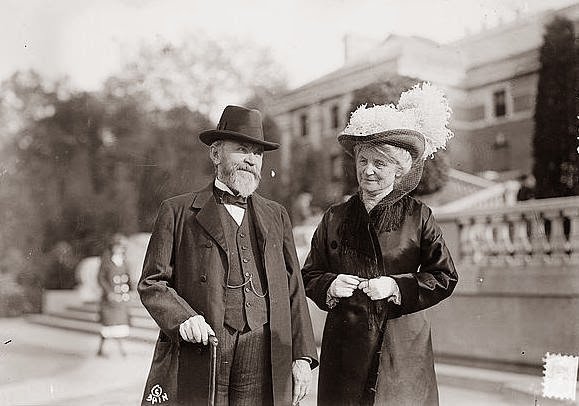Phipps Family History: The Phipps in Allegheny City
The popularity of television and film productions of Downton Abbey and The Gilded Age have sparked renewed interest about the lifestyles of families like the Phipps during the Gilded Age (c. 1870-1900) and Edwardian Era (1907-1914). For many, walking into historic houses from those eras provide a chance to experience that lifestyle, albeit in a limited way.
Henry Phipps Sr. circa 1856
Westbury House and its surrounding gardens were envisioned and constructed during the latter era (construction began in 1905). Visitors to Old Westbury Gardens can see the world of the Edwardian era as it manifested itself in the United States, particularly on Long Island. Unfortunately, the homes of the Phipps family during the earlier era no longer exist.
After their arrival in the United States in 1832 and following a brief stay in southern New Jersey and Philadelphia, Henry Sr. and Hannah "Anna" (née Frank) made Allegheny City, Pennsylvania, home for their four children including Henry Jr., the father of John “Jay” Phipps, the owner of Westbury House.
From Halcyon Days: A gathering c 1895: standing, third from left, Henry Phipps Jr.; seated, far right, Andrew Carnegie
Visitors to Old Westbury Gardens and those familiar with Halcyon Days, the book which chronicles the family’s biography, know about the friendship and business connections between Henry Jr. and his childhood friends Andrew and Tom Carnegie, who lived just a few houses away on Rebecca Street in Allegheny City. As Henry Jr.’s business career prospered, he relocated from the cramped, industrial area of Rebecca Street to the middle and upper-class neighborhoods on North Avenue and Ridge Avenue, closer to parks and open space.
Allegheny City, now known as Pittsburgh’s North Side, was the municipality located north across the Allegheny River from Pittsburgh. Its history is little known outside of Western Pennsylvania, particularly after its annexation by its southern neighbor, Pittsburgh, in a controversial 1907 referendum. Despite its smaller size both in population and geography, Allegheny City and its citizens were in no way inferior to Pittsburgh.
During the Gilded Age, Allegheny City was a city of millionaires and one of the most concentrated cities of wealth in the United States. In 1892, 44 millionaires lived in Allegheny City, while Pittsburgh could only boast of 35. The homes of most of these families were in an area called Allegheny West, now a historic district, on Ridge Avenue with the corner of Ridge and Galveston the site of the largest mansion, the Byers-Lyon House, built between 1896 and 1898.
Just a few blocks west on the corner of Irwin (now Brighton Avenue) and Ridge Avenues was the final Allegheny City residence for Henry Jr. and Anna (née Shaffer) and their four children, including Jay. The house was eventually demolished and a mansion was constructed there in 1908 by B. F. Jones, who, like Jay, was an heir to a steel business, the Jones and Laughlin Steel Company.
The accompanying image is from the 1890 G. M. Hopkins & Co. Real Estate Plat Book. The lot is noted as owned by A. C. Phipps, which is incorrect as it was owned by Henry’s wife, Anna Shaffer Phipps. The note in pencil indicates the parcel’s subsequent owner B. F. Jones. The preference for wealthy businessmen to live in large homes located on large parcels located outside cities was just beginning (cf. Clayton, the Henry Clay Frick Residence).
Further research is needed to explore the family’s life at the Ridge (Brighton) Avenue home. Newspaper periodical accounts mention this Phipps family residence throughout the 1880s (the 1880s US census notes the family lived at 131 North Avenue, a middle-class neighborhood located just north of Allegheny City’s center). It was during this decade, the 1880s, when Henry and Anna made their mark in the business and cultural circles of Allegheny City and Pittsburgh, capped by Henry’s gift to the city of his childhood of the original Phipps Conservatory, now the site of the National Aviary, as cultural resource and respite to the city’s working families.
By the early to mid-1890s coinciding with his semi-retirement, Henry Jr. and Anna would begin to travel the world and rent estates in England as their temporary residences until the purchase of real estate along Fifth Avenue, New York City, in 1902-03 in order to build a more permanent home.
~Paul Hunchak, Director of Public Programs and Visitor Services
Henry Phipps Jr. and his wife Anna -- photo from the collection of the Library of Congress




